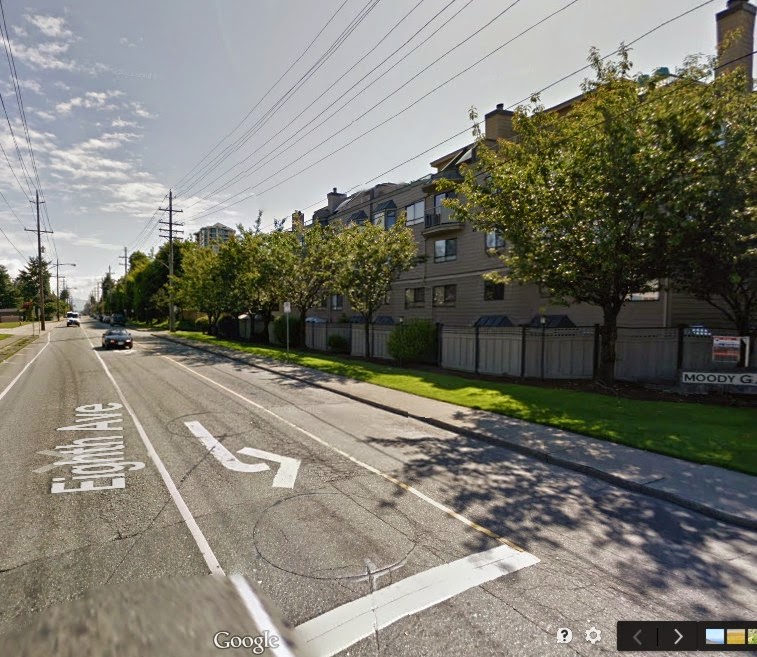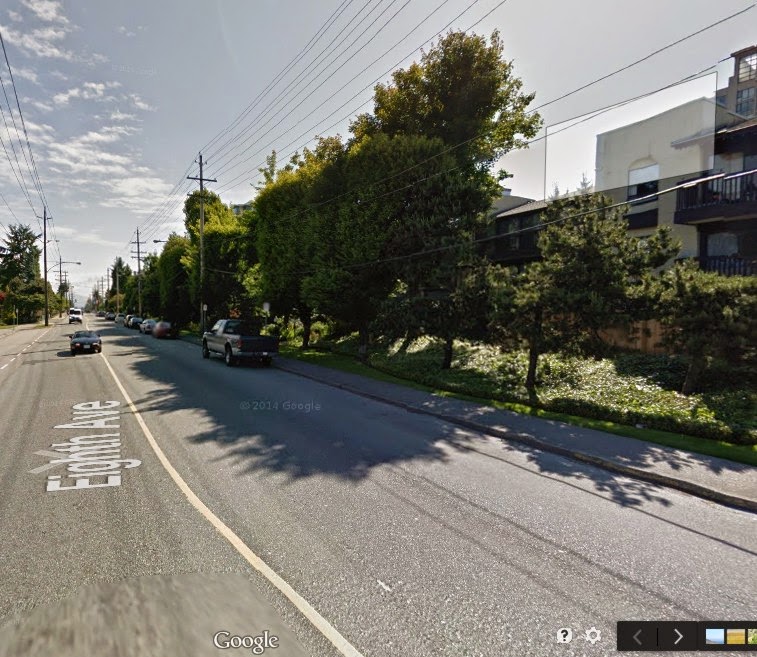Allow me to start with the obligatory apology for not writing more frequently. I’m busy.
This story in the NewsLeader caught my attention, though, because it demonstrates a failure at many levels. That we would cut down mature trees in our City to make it easier for a few cars to move a few hundred metres to the next traffic constriction is an example of a planning process gone wrong.
Where to begin?
The City has recently outlined its consultations on an Urban Forest Management Strategy. At the open house last month at Century House (about 300m from where these trees are slated to be removed), staff and consultants talked about how important a healthy tree inventory is to our City – providing shade to reduce energy costs, evapotranspiration to reduce utility costs and improve rainwater quality, noise baffling, light pollution reduction, critical habitat for pollinators and songbirds, etc. etc. At the same time, the city’s tree inventory is being reduced at a faster rate than population growth, and although our current inventory (as percentage of land cover) is similar o other cities in the region, it lags far behind the North American average and the level identified as desirable to receive all of the benefits that healthy urban forest can provide.
We don’t yet know where the Urban Forest Management Strategy is going yet, but the goal is pretty clear: lets stop cutting down mature tress for bad reasons, so when we have to cut them down for good reasons, it has less impact, and we don’t have to spend so much replacing them.
The story above is an example of cutting down mature trees for bad reasons.
The first-level reason for removing the trees sounds OK – they want to make a bus stop more accessible and functional. I’m all for it, accessibility at that stop is really important, as it is commonly used by seniors to access the nearby Century House and the Massey Theatre, and by students accessing the High School. Constant improvement of our sustainable transportation network is something I have been calling for in my many years on the Advisory Committee for transit, Bicycles and Pedestrians.
However, improving the accessibility of this stop does not require the removal of any trees. What does require the removal of the trees is protecting two parking spots and creating the illusion of “getting cars moving”.
Allow me to explain.
The current bus stop is at a spot on 8th Avenue where there is only one east-bound lane, the rest of the road width being eaten up by a westbound lane and a south-turning left turn bay.
 |
| Looking east on 8th Ave, at where The City wants to remove trees and grass to add more asphalt. Google Maps image. |
One allegation made by the City’s transportation department is that the bus here “holds cars up” and creates congestion, so they want to remove the greenspace of the boulevard to make a “bus stop lane”. This is absurd for two reasons. That bus stop is currently used by the 128 and the C4. The 128 is normally a 30-minute service, but bumps up to 20 minutes during rush hour. The C4 is a half-hour service. That means up to 5 times an hour, for 20 seconds, a bus blocks the lane. A lane that has a stop light that is red for half of every minute 24 hours a day, all day. Today I dropped by the site and noted th 128 was 300 metres east of the bus stop – stopped by the line of cars waiting to get through the light at 6th. Removing the busses completely on this route will do absolutely nothing to reduce the congestion on 8th in the afternoon rush (the only time it is congested in any meaningful way).
I need to be clear here: they don’t want to remove the trees and green space to accommodate the bus, they want to do it to accommodate the cars allegedly “congested” by the bus – to get the bus out of the cars’ way. As a reason to remove healthy mature trees, this argument is silly.
The suggested (and blithely discounted) option is to move the bus stop 100m to the east, where the road expands out to 2 lanes.
 |
| 100m to the east, where the road expands to accommodate parking. This Google Maps thing is pretty cool. |
No-one is saying so, but it is clear that the reason this is being discounted is the need to remove two on-street parking spots. The idea that this spot being 100 m further east will “provide incentive to jaywalk” is ridiculous, as there are bus stops across the City that are located 100m from an intersection, and the City is already resistant to calls from the Students at NWSS for a mid-block crosswalk on 8th Ave to alleviate sidewalk congestion on 8th and stop jaywalking. The loss of parking spots is most likely why they can state “We don’t have consensus in the building”. So to reiterate: we are talking about removing greenspace and trees to accommodate occasional parking needs, not to accommodate a bus.
In summary, the thinking by the City is wrong here, and this is why we need an Urban Forest Management Strategy, and why we need to change our planning of roadspace to reflect the priorities set by the new Master Transportation Plan.
There are often good reasons to remove trees, but none can be found here. Instead, we are given a series of bad planning compromises and post-hoc rationalization that results in the removal of perfectly healthy mature trees. And all the benefits of a healthy tree canopy that were discussed in the Open House? They sound exactly like what Ms. Broad is describing she and her neighbours receive from these trees. The ones the City would not allow them to cut down two years ago.
2 existing problems could be solved and no trees would have to be cut by moving the stop half a block east (at the exit from the High School). The 6th Street stop for 128 in front of IHOP is bad because no blvd and parking lot means no accessible Bus Shelter can be built (has bugged City Staff and Access committee for years).
That block of 8th is also dangerous for teens jaywalking at the school exit (another problem for years). Put a flashing crosswalk at the exit, combine the two awkwardly placed stops at that point where there are two lanes and make it safer and easier for all to use. It will also be the natural spot for a bus stop if the new school is ever built. Two existing problems solved, one avoided and safer for all in one change. I’ll bring up the idea to staff at next week’s Access comm.
Cheers, Ken Wilkinson.
Two recent examples come to mind.
1. The widening of the Fifth St at Sixth Ave intersection that resulted in two trees losing their lives. When I asked the City the rationale for widening the intersection they did not really know. Subsequently, the traffic consultant who recommended this widening contacted me and indicated it was being done for “safety reasons.” I am not sure there were any recent traffic incidents but there you go.
2. The City gave residents 15 hour notice of their plan to fell the largest mature maple tree on our block of Fifth St. Apparently, it was diseased or some such. I know the arborist the city consulted on this tree. He said that he told the City that after examining the tree, it had some minor issues typical of maple trees of this size and age but thought that it was healthy enough. Two days after his report the tree was condemned and summarily executed. The arborist was upset by this action and examined the (huge) stump, which he said was that of a still very healthy tree.
Diseased and rotting trees need to be felled. What upset me was how little notice people were given.